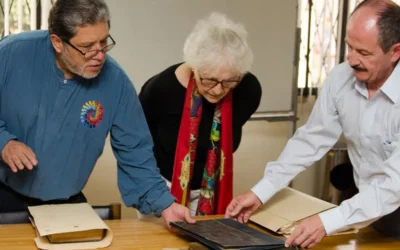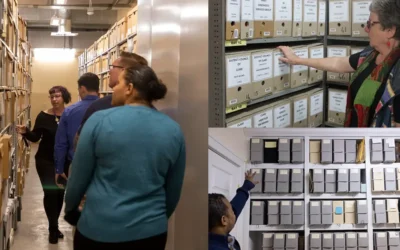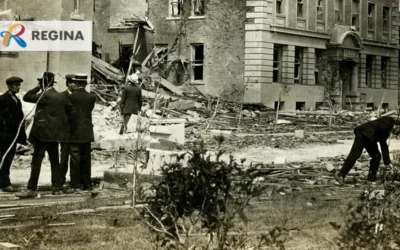Investing in Institutional Archives
Margot Note
When we think of archival repositories, we frequently think of academic archives or large historical societies. We often forget about business or institutional archives, because they are usually closed to the public.
Institutional archives fall into many categories: government at all levels, corporations, not-for-profit organizations, colleges and universities, and religious institutions. These organizations establish archives for several reasons and develop archival collection policies.
Why Invest in Archives?
The first motive for establishing an archives program is efficiency. Organizations recognize the need to both preserve and find valuable information. Organizations have accountability issues and must be able to retrieve documents for information purposes, as well as for evidence. Unchecked and uncontrolled growth of records is unwieldy and costly.
The second aim is responsibility, which is like efficiency in some respects. Records are created and hold administrative, legal, and fiscal value, and organizations need to document their many functions. As organizations have become more significant and multifaceted, these functions are harder to track.
A sense of history is another reason. Manuscript repositories share this characteristic as well, but for in-house archives, there is often pride regarding organizational accomplishments, and a desire to promote those achievements. Archives are often established on a significant anniversary or event. Sometimes in business, the looming retirement of the founder, for example, brings attention to the need to preserve the history of the corporation.
The last major reason is publicity, which is connected to the previous point. Organizations want to be able to promote what they do, and often that requires documentation that the archives would have retained. Smart businesses have realized the value of using historical materials for many of their advertisements. Coca Cola, for example, is a leader in this field and promotes its history throughout its website and marketing materials.
I recently stayed at the historic Peabody Hotel in Memphis, Tennessee, a site that has fully embraced their history and use it in their marketing. Along with their world-famous ducks in residence—a tradition they have kept for more than 80 years—they also have a “memorabilia room” on their mezzanine. Inside this smartly appointed area are artifacts and documents displaying their legacy. By using their archival material as a marketing resource, the Peabody has generated so much business for itself and downtown Memphis.
Shared Characteristics
While institutional archives vary in size and complexity, they do share specific features. They have a greater emphasis on provenance and original order than non-institutional archives. Institutions have an inherent structure, reflected in the organizational chart, and the archives reflect that order. Understanding which department created a series of records is crucial, and the filing systems take on more importance than they do in a typical manuscript collection where original order might not exist. Archivists thus must be familiar with the organizational chart and filing systems.
They differentiate between primary and secondary audiences. In some ways, in-house archives are like special libraries in that they serve a specific user group, namely employees of the sponsoring organization. Institutional archives may be open to the public or may help the internal audience. Even the Coca Cola archives, which has a public face, provides public access to a small and defined element of the overall records.
Institutional archives also tend to have different descriptive and reference systems. Since the in-house audience is more circumscribed, the finding aid system does not have to meet the needs of the same broad user groups. In fact, in most cases, the archivist does the searching and retrieving of the information for the requesting employee, providing either information or copies of documents. There is more likely to be an overall structure to the finding aid system rather than separate finding aids for individual collections. The structure of the organization is in and of itself a kind of finding aid, as one can identify which office produced the desired materials. Along similar lines, in-house archives don’t need the same kind of public service system and facilities. Often there is no real reading room.
When I was the head of an archives department at an international nonprofit, I fielded research requests from around the world. Although the archives were closed to the public, I was able to do research for the users and send them digitized records that fulfilled their needs.
The Value of Institutional Archives
In my consulting practice, I encounter so many businesses that are interested in preserving their history but don’t know where to start. Although they may be unaware of the archival program options available to them, they are eager to establish archival workflows ad archival collection policies that protect their hard-earned knowledge and history in perpetuity. Embracing the value of their records has inspired them to invest in their archives.
Margot Note
Margot Note, archivist, consultant, and author is a guest blogger for Lucidea, provider of ArchivEra, archival collections management software for today’s challenges and tomorrow’s. Read more of Margot’s posts here, and get your free copy of Margot’s recent book for Lucidea Press, Demystifying Archival Project Management: Five Essentials for Success!
Similar Posts
Enhancing Collaboration; Methods for Archivists
Archivists can enhance collaboration through user-centric approaches and efficient processing methods based on customer service principles.
Navigating Selection in Archival Practice
The archival selection process is far from straightforward, given the limitations of long-term preservation and ongoing accessibility challenges.
Responsible Stewardship in Archival Practice
Responsible stewardship is a philosophy that guides the actions and decisions of archivists in safeguarding collective memory.
A Modern View of a City’s History via ArchivEra
Brief success story on City of Regina Archives’ use of ArchivEra to manage collections of legal, historical, administrative or financial significance
Hosting service
Enjoy all of the benefits of your Lucidea solution with secure, reliable, stress free hosting
Programs & incentives
No matter your size or budget, we’ve got you covered, today and tomorrow




Leave a Comment
Comments are reviewed and must adhere to our comments policy.
0 Comments